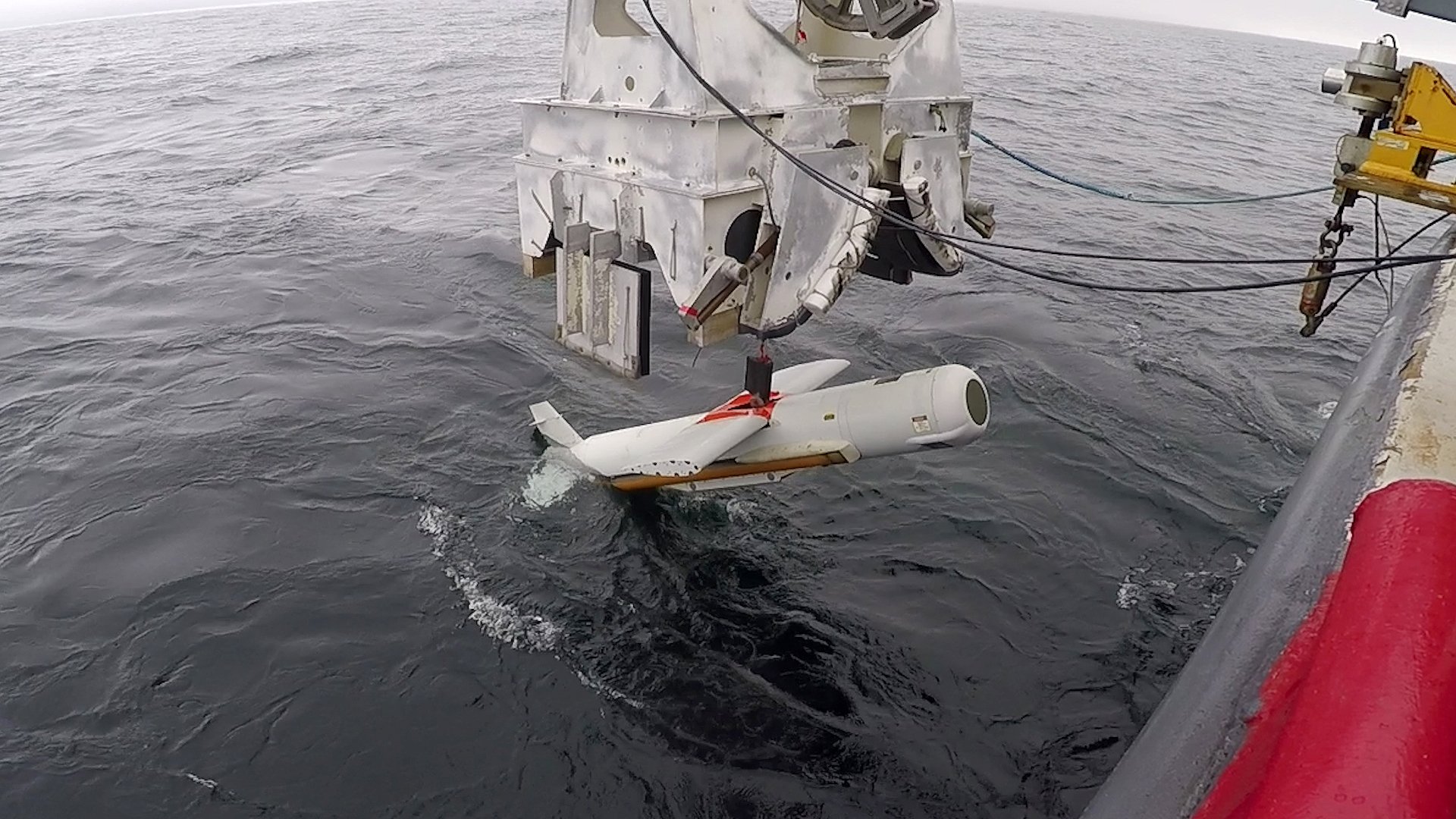
The AN/AQS-20C towed mine-hunting sonar is one of the key capabilities the Navy plans to employ from Littoral Combat Ships to detect and destroy undersea mines. (U.S. Navy photo by Eddie Green.)
WASHINGTON — The Navy has given the official green light for its package of capabilities focused on defeating undersea mines to begin operations in the fleet.
The Littoral Combat Ships’ mine countermeasures mission package contains several systems that when used in conjunction with one another allow sailors aboard an LCS, or another vessel of opportunity, to detect and destroy undersea mines.
The milestone, known as “initial operational capability” or IOC, was granted Monday and is effectively an endorsement that the technology has been tested and proven enough so the broader fleet can begin using it.
“The declaration of the MCM MP and [associated sonar] IOC is a significant accomplishment for the LCS Mission Modules program and the future of mine countermeasures,” said Capt. Godfrey Weekes, the mission modules program manager. “This milestone enables the Navy to field modern MCM systems to the fleet, replacing aging platforms and sensors. The new equipment utilizes cutting-edge unmanned and autonomous technologies and keeps our sailors out of harm’s way.”
With the mission module operational, it clears the pathway for the Navy to retire its legacy mine-hunting capabilities, which includes Avenger-class mine countermeasures ships that work in conjunction with MH-53E Sea Dragon helicopters to achieve similar objectives.
RELATED: Fincantieri finishing $300M shipyard renovations, a big bet on the US Navy’s frigate plans
The declaration comes as the Navy has had to increasingly defend its choices for the LCS program to lawmakers. Chief of Naval Operations Adm. Michael Gilday has repeatedly testified that he believes the Navy’s best option is to retire certain LCS vessels much earlier than anticipated due to the lack of capability they’d bring to the future fight. Part of the reason the Navy wanted to decommission the ships stemmed from the failed effort to integrate an anti-submarine warfare mission package, which was thought to have been a technological failure.
“America cannot afford a hollow force,” Gilday told Senate appropriators last year while defending the budget request. “We have been there before, and we have seen tragic results. It is a mistake we must never repeat.”
It’s not an argument with which lawmakers, who are eager to see the Navy’s total ship count grow, have always been satisfied, but it has been Gilday’s message on LCS since last year when the service sought to decommission nine of those ships. Congress in its annual defense policy bill opted to save five of those LCS.
Despite the pushback last year — and during several previous years — the Navy in its fiscal 2024 budget request is continuing to seek permission to decommission two LCS, both of which have been in service for less than a decade — alongside some amphibious ships, which have stirred their own controversy.








